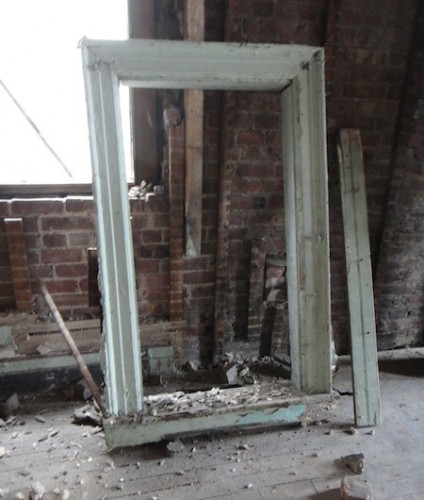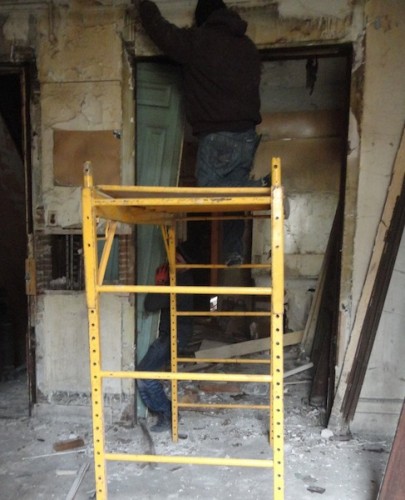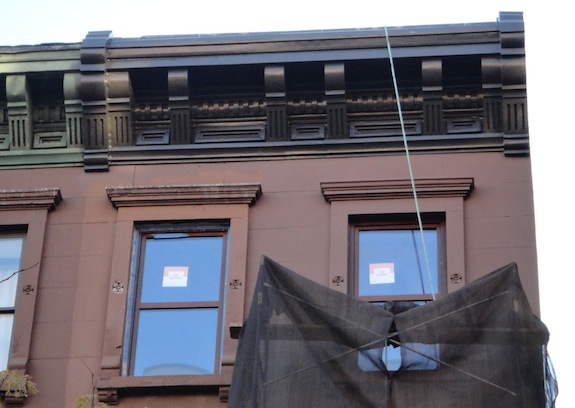[UPDATE: Our agent hadn’t put in the discount for being fully sprinklered, so I’ve updated the numbers to reflect that now that we know the true price…]
Since we’re coming to the end of construction as well as the one year mark on our Builders’ Risk policy we’re converting over to traditional homeowner’s insurance – and it’s a lot more expensive than I expected it to be. But admittedly I hadn’t researched insurance properly…
I had a little sticker shock when our insurance agent (David Bodansky – david@zamzok.net, 212-561-8990) told me the new homeowner’s policy was going to run $6,400 (with Chubb as the insurer). So I called GEICO (where we have auto insurance) and was told their policy was going to cost $5,800. It was a bit of an apples and oranges comparison but it seemed Chubb was just a little more expensive – but Chubb is Chubb – the best insurance company out there.
At the end of the day GEICO would insure the building for $1.087M (125% of $870K “base”) with $609K of coverage for personal property and $500K in liability coverage. Problem is, if it was a catastrophic loss, I don’t know that we could rebuild everything for $1.087M – it would be tight. That coverage cost $5,800/year with a $1,000 deductible and (I think) $5,400/year with a $2,500 deductible. They then would charge $400/year for another $1.5M of umbrella coverage for a total liability coverage of $2M. So GEICO’s total was roughly $5800/year with a $2,500 deductible.
I had our agent redo the Chubb quote with an umbrella policy and auto (so structured more like the GEICO quote). Chubb will insure the building for $1.4M – so plenty to cover a catastrophic loss. Liability coverage was quoted at $500K. The cost of that was $5,700 $5,050/year with a $2,500 deductible or $5,450 $4,800/year with a $5,000 deductible. So Chubb cost about $350/year more LESS than GEICO, but AND it had more coverage ($1.4M instead of $1.087M). But Chubb charges $700/year for a $2M umbrella (compared to $400/year for $1.5M with GEICO).
Needless to say, we’re going to go with Chubb even though it’s $600/year more expensive. It’s $50 less per year and we get $300+K more coverage on the building, $500K more liability coverage, and we get the Rolls Royce of insurance companies.
Our agent said he had done similar quotes for another client and Travelers also came out more expensive than Chubb. So it seems that townhouse insurance just runs a bit under $6K/year. I’m not happy it’s that high, but it is what it is… There might be cheaper insurers out there, but I can’t imagine fighting with cut rate insurance company over a million dollar claim.
The whole question of how much umbrella coverage to get was a big question… After researching it online I’m still not 100% certain $2.5M is sufficient – but it probably will be. One thing I do know is that we’ve been under insured for a while now. We should have gotten an umbrella policy a long time ago. Better late than never, I guess…
I should also mention that the Allstate insurance agent on 116th Street in East Harlem booked an appointment to sit down with me and only after I got there did she tell me that Allstate doesn’t write homeowner’s insurance in the 5 boroughs. If she had told me that upfront it would have saved me over an hour of traveling down and back to meet with her. (Grrrrrr…)

 Friends are about to start renovations on their South Harlem brownstone. Their place is a total wreck and there aren’t enough original details to warrant a renovation with a traditional aesthetic. Still, there are some original details left and instead of just throwing them out they let
Friends are about to start renovations on their South Harlem brownstone. Their place is a total wreck and there aren’t enough original details to warrant a renovation with a traditional aesthetic. Still, there are some original details left and instead of just throwing them out they let 


 In the end it doesn’t look new – there are imperfections in it. But we like the imperfections – it looks like an original cornice that’s in decent shape, which is exactly how it should look…
In the end it doesn’t look new – there are imperfections in it. But we like the imperfections – it looks like an original cornice that’s in decent shape, which is exactly how it should look…